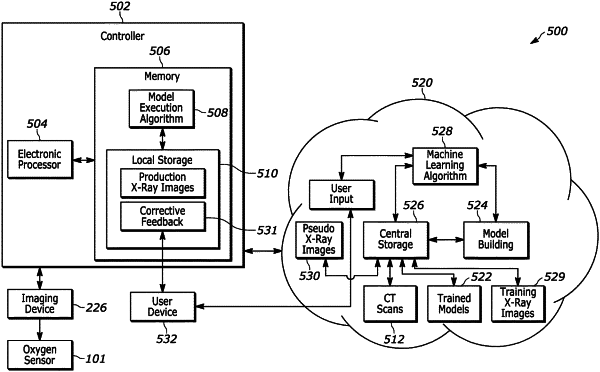| CPC G01N 27/4175 (2013.01) [G01N 23/046 (2013.01); G01N 23/18 (2013.01); G01N 27/4163 (2013.01); G06N 20/00 (2019.01); G06T 11/003 (2013.01); G01N 2223/04 (2013.01); G01N 2223/401 (2013.01); G01N 2223/419 (2013.01); G01N 2223/426 (2013.01); G01N 2223/645 (2013.01); G01N 2223/646 (2013.01); G06T 2207/10081 (2013.01); G06T 2207/10116 (2013.01); G06T 2207/20081 (2013.01)] | 18 Claims |

|
1. A system configured to detect defects in a first oxygen sensor, the system comprising:
an X-ray imaging device configured to capture a production X-ray image of the first oxygen sensor;
an electronic processor configured to use a trained oxygen sensor defect detection model to identify a defect of the first oxygen sensor by
producing a pseudo X-ray image by simulating a projection of a fan beam through computed tomography (CT) data of a second oxygen sensor;
measuring, via the trained oxygen sensor defect detection model, a fan-beam distortion in the production X-ray image;
selecting, via the trained oxygen sensor defect detection model, the pseudo X-ray image based on the fan-beam distortion;
performing a comparison, via the trained oxygen sensor defect detection model, of the production X-ray image to the pseudo X-ray image; and,
classifying, based on the comparison, the production X-ray image as representing an improperly assembled oxygen sensor.
|